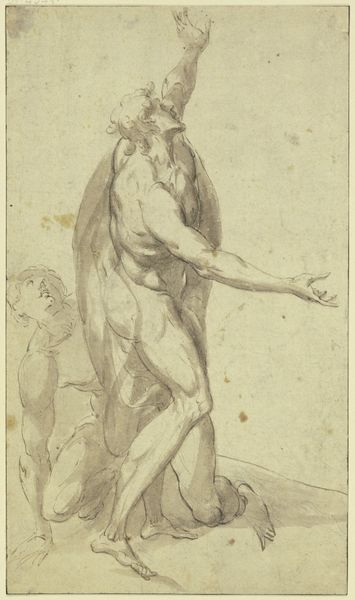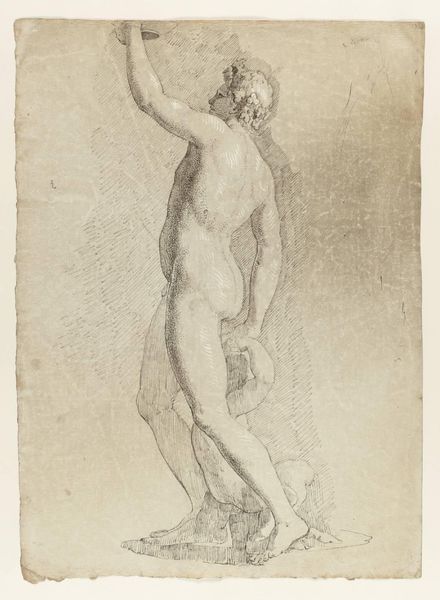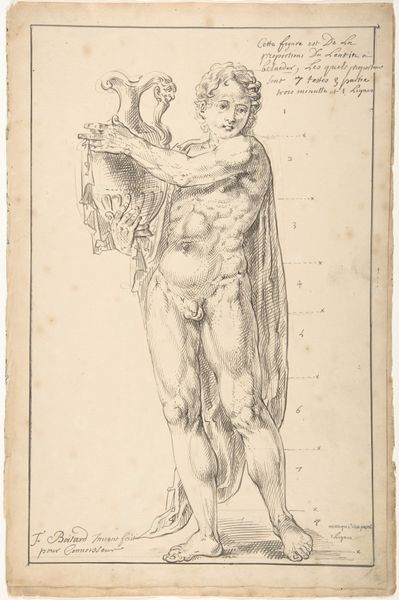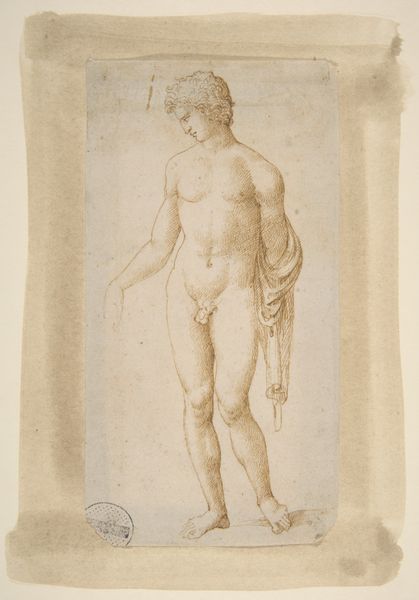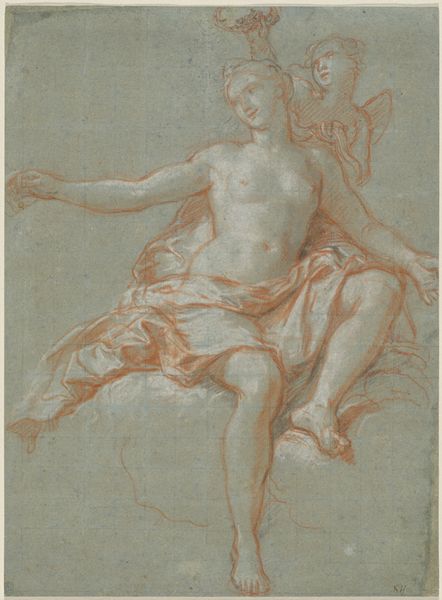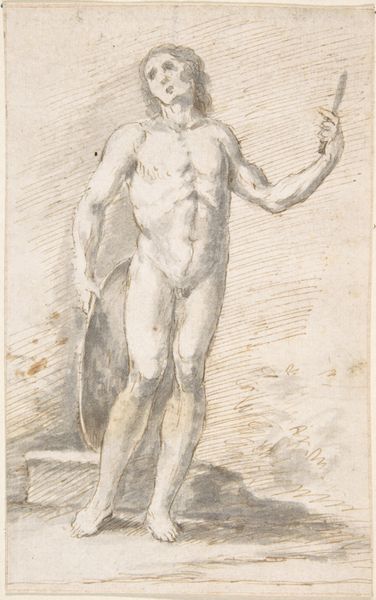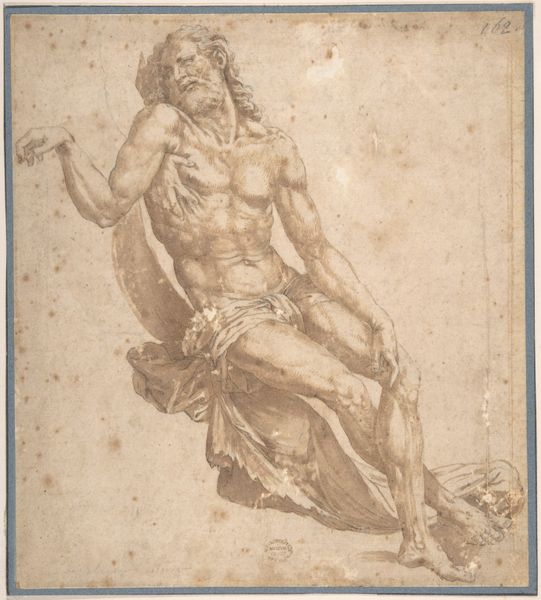
drawing, charcoal
#
portrait
#
drawing
#
baroque
#
charcoal drawing
#
charcoal
#
charcoal
#
nude
Dimensions: 520 mm (height) x 375 mm (width) (bladmaal)
Editor: Here we have Hendrik Krock’s "Den borghesiske f\u00e6gter," a charcoal drawing dated sometime between 1671 and 1738. The pose is striking, like he's ready to take on… well, anything. It almost feels performative. What's your read on this piece? Curator: I see a body caught between the performance of masculinity and its material vulnerability. How might we consider this "bourgeois fencer" not just as a depiction of physical prowess, but as a study of the anxieties and contradictions inherent in early modern ideals of manhood and class? Editor: So, you are looking beyond the surface to see the deeper meaning behind the image. The “anxieties”, what does that involve exactly? Curator: Well, the choice of charcoal, for instance, lends itself to gradations of light and shadow, accentuating musculature while simultaneously rendering it fragile. The figure's nudity removes markers of status, while his fencing stance implies a constant need for self-defense and assertion in a society defined by strict hierarchies. It challenges us to think about the role of violence, or its threat, in maintaining social order. Editor: I never would have considered how the medium contributes to that message! The light and shadow are quite profound now that I am giving it a second look. Curator: And what about the gaze? Does his expression communicate power, or a kind of guarded uncertainty? Consider how the artist uses the male body to articulate these societal tensions. Where do you see the fencer positioned? Who could he represent within the context of 18th-century bourgeois society? Editor: He definitely has some anxiety about the pose. The slight, almost unsure glance off to his left might indicate an opposition to the establishment. I guess, he’s just another man pushing back against a system of privilege! Curator: Exactly! And by focusing on the "everyday" bourgeois, Krock subtly critiques the existing power structures of his time. I learned quite a lot, revisiting the socio-political elements within the visual elements of Krock’s rendering of the male form!
Comments
No comments
Be the first to comment and join the conversation on the ultimate creative platform.


